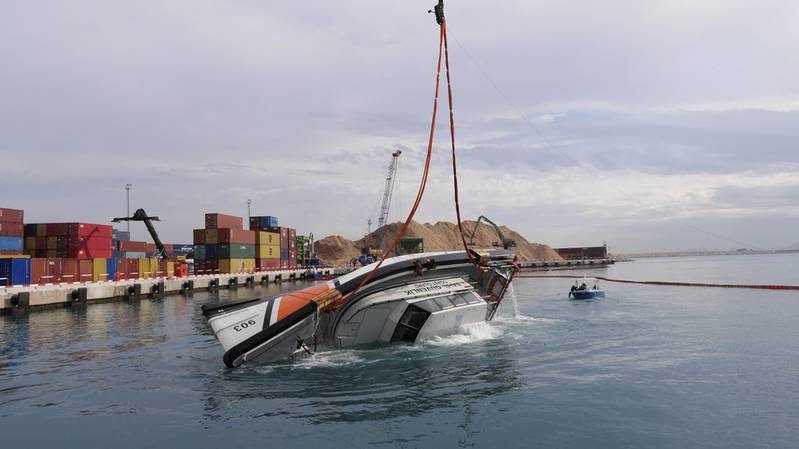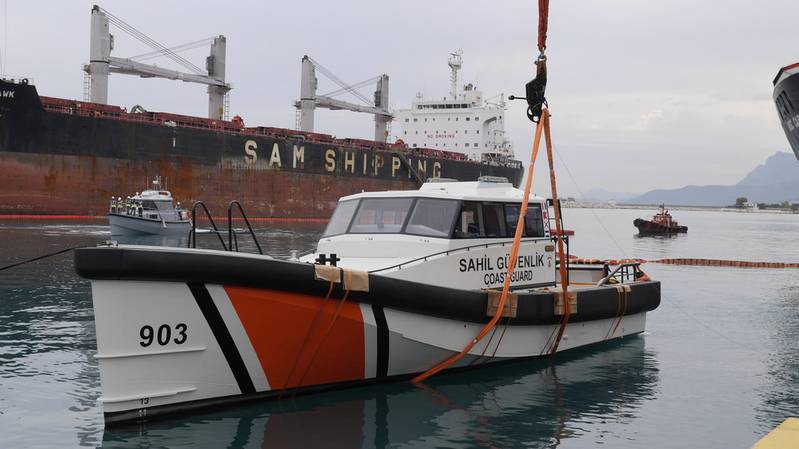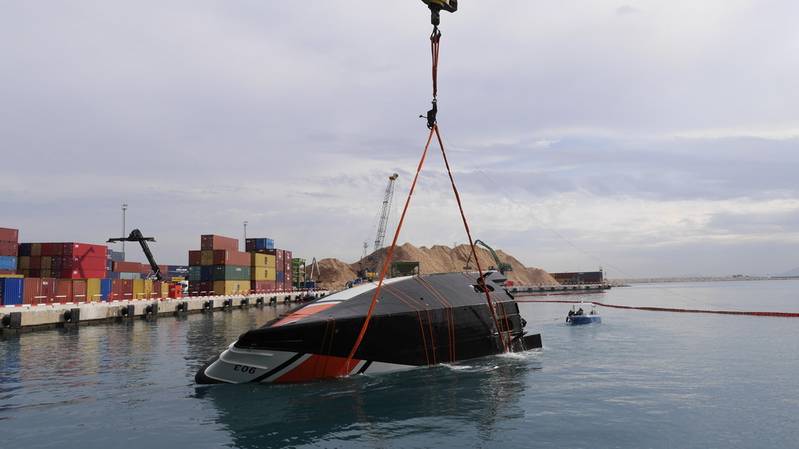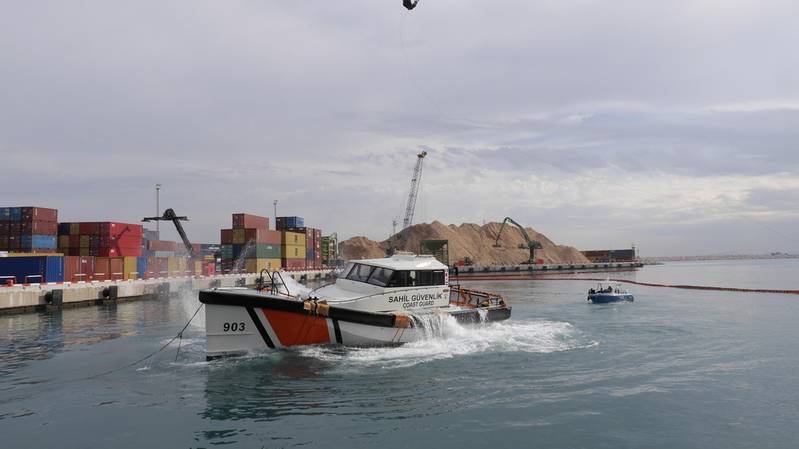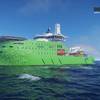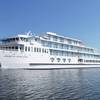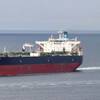Damen – in cooperation with the Turkish Coast Guard, the International Organization for Migration (IOM) and engine manufacturer MTU – said it has completed full scale roll-over testing of its Search and Rescue Vessel 1906 with running engines, in Antalya, Turkey.
According to Damen, its SAR 1906 has been an example of technological and academic cooperation since the vessel’s conception. The design itself is the result of close collaboration between Damen and the Royal Netherlands Sea Rescue Institution (KNRM), Delft University of Technology, De Vries Lentsch Naval Architects.
Now, almost five years since the vessel was introduced to the market, the latest roll-over tests demonstrate that Damen is still working toward improving this design through ongoing research.
“This unique test with running engines was at the Turkish Coast Guard’s request. This excellent result has been accomplished with the great cooperation between all parties,” said Damen’s Sales Manager, Boran Bekbulat.
“Moreover, we are proud to say that this is the first time that such a roll-over test has been carried out successfully with running engines. We would like to thank the Turkish Coast Guard for challenging us to test our limits. Most importantly, proving the capabilities of the vessel for which she is designed, giving her crew the confidence and the control in all weather conditions.”
“We have been working closely with MTU to develop and improve engine software that is able to handle a capsize situation. This has been backed up by engine roll-over tests at their facilities and our own proven investigations into the roll-over capacity of the SAR 1906,” said Meredith Dijkstra, Damen Product Portfolio Manager High Speed Craft, describing the events leading up to the tests and highlighting the shipbuilder’s cooperation with MTU.
In the eventuality of a vessel capsize in extreme weather conditions, the capsize switch detects the roll-over and sends out signals to, for example, the engine software which will go into ‘roll-over mode’. “At this moment, the water jets are automatically clutched out and the engine returns to idle mode to protect the engine,” Dijkstra explained. “This continues until the software detects the vessel has righted itself and the crew can directly regain control.”
The SAR 1906 also has several mechanical design features in place to enable continuous and safe operation of the engine. Dijkstra said, “We purposely used mechanical solutions, instead of electronic solutions, because they are safer and more durable.” Examples of the mechanical design features are the addition of extra water traps to the ventilation inlets and exhaust systems.
“After all, this is the principle that we have been working towards; when all other vessels have to turn back to port because of bad weather, the SAR 1906 needs to be able to continue her work when no one else can,” Dijkstra said.







